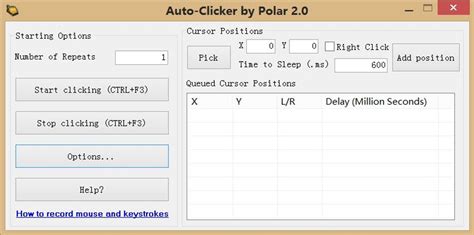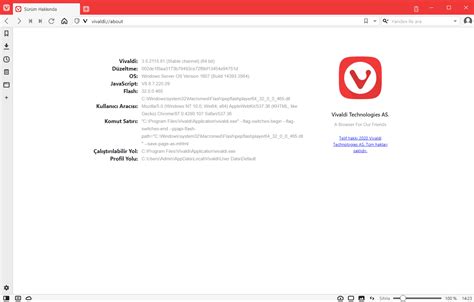Folder permissions report
Author: s | 2025-04-24

PERMISSIONS REPORTER EXCLUDED FOLDERS Folders can be excluded from permissions reporting either by path or by name. Permissions Reports. Folder permissions tree; Folder Permissions Reports. Folder permissions tree; Folder permissions report; File permissions report; File owners report; Share permissions report; Powerful Tools. Advanced filtering; Report

NTFS Reports - Permissions for Folders
PRODUCT FEATURES Compare free and pro edition features PERMISSIONS REPORTER FEATURES The basic edition of Permissions Reporter is 100% free (no ads, malware, or spyware) and provides many useful features. We also offer a professional edition license that unlocks advanced features such as report scheduling, advanced filtering, and much more. See below for details. See what's new in Permissions Reporter 4! FEATURE DESCRIPTION PRO EDITION FREE EDITION Folder Permissions Report Provides a browsable, hierarchical view of permissions across all folders. Table Permissions View A "flat" folder permissions report view with advanced sorting, grouping, & filtering. File Permissions Report Shows files not inheriting or with permissions differing from their parent folders. File Owner Report Offers a hierarchical overview of disk space consumed by file type and owner. Share Permissions Report Quickly see who has access to shares, along with their rights and access levels. Error Logging Every error and warning encountered during file system analysis is recorded. Excluded Folders Folders can be excluded from permissions reporting either by path or by name. HTML Data Export Export permissions report data to HTML for later viewing in a browser. Group Member Expansion Show group membership (direct and optionally nested) directly in folder reports. XML, Excel, PDF & CSV Data Export Export permissions report data to XML, MS Excel, PDF, or CSV file formats. Advanced Filtering A range of filters make it easier to narrow down the permissions analysis results. Report Comparison Report on the differences between two permissions reports. Built-In Scheduler Schedule the creation of folder, file, owner, and share permissions reports. Command Line Support Easily generate, export, and email permissions reports from the command line. Re-Import Existing Report Data Report data previously exported in XML file format can be re-imported at a later date. Email Integration Email support allows you to easily send zipped report data to one or more recipients. Authentication Support Authenticate to access Windows systems or external storage devices. Priority Tech Support Priority access to our world-class technical support services. Get immediate access to exclusive Pro Edition features! Upgrade to Pro PERMISSIONS REPORTER EXCLUDED FOLDERS Folders can be excluded from permissions reporting either by path or by name. Permissions Reports. Folder permissions tree; Folder Managing permissions is one of the most critical security concepts to implement. It is essential that only eligible users have access to critical systems and data and so you need to ensure that their NTFS permissions include only the bare minimum that they need to do their job.One way to generate a list of security permissions to files and shared folders on Windows servers is to get folder permissions using Microsoft PowerShell.Using a PowerShell script, you can generate a PowerShell folder permissions report and export this to a CSV file which can be opened in Excel. This can be analyzed so you can identify users with unnecessary permissions and then adjust those permissions to align with your data security policy. This will then minimize the risk of a data breach.However, the reporting of PowerShell folder permissions in this way requires a good knowledge of PowerShell scripting and the analysis can be time consuming with the amount of data produced.In this article, we will look at how to use PowerShell to get folder permissions and then look at an alternative, more straightforward approach using the Lepide Auditor for File Server.How Lepide HelpsAn alternative method to get and export folder permissions which requires no knowledge of PowerShell scripting is to use Lepide Auditor for File Server.By running the Permissions by Object report from the Lepide Solution, you can see all permissions for a specific object. An example is shown below:In this example, the selected object is Employee’s Account details. The report shows the permissions for the selected object and includes information on how the permissions are derived – Direct, Inherited or Indirect via a Group.To run the report:Click the Permissions & Privileges iconSelect Permissions by Object from the tree structure on the leftChoose a File Server and click Generate ReportThe report is generated and can be exported to CSV format. It can also be filtered and savedComments
PRODUCT FEATURES Compare free and pro edition features PERMISSIONS REPORTER FEATURES The basic edition of Permissions Reporter is 100% free (no ads, malware, or spyware) and provides many useful features. We also offer a professional edition license that unlocks advanced features such as report scheduling, advanced filtering, and much more. See below for details. See what's new in Permissions Reporter 4! FEATURE DESCRIPTION PRO EDITION FREE EDITION Folder Permissions Report Provides a browsable, hierarchical view of permissions across all folders. Table Permissions View A "flat" folder permissions report view with advanced sorting, grouping, & filtering. File Permissions Report Shows files not inheriting or with permissions differing from their parent folders. File Owner Report Offers a hierarchical overview of disk space consumed by file type and owner. Share Permissions Report Quickly see who has access to shares, along with their rights and access levels. Error Logging Every error and warning encountered during file system analysis is recorded. Excluded Folders Folders can be excluded from permissions reporting either by path or by name. HTML Data Export Export permissions report data to HTML for later viewing in a browser. Group Member Expansion Show group membership (direct and optionally nested) directly in folder reports. XML, Excel, PDF & CSV Data Export Export permissions report data to XML, MS Excel, PDF, or CSV file formats. Advanced Filtering A range of filters make it easier to narrow down the permissions analysis results. Report Comparison Report on the differences between two permissions reports. Built-In Scheduler Schedule the creation of folder, file, owner, and share permissions reports. Command Line Support Easily generate, export, and email permissions reports from the command line. Re-Import Existing Report Data Report data previously exported in XML file format can be re-imported at a later date. Email Integration Email support allows you to easily send zipped report data to one or more recipients. Authentication Support Authenticate to access Windows systems or external storage devices. Priority Tech Support Priority access to our world-class technical support services. Get immediate access to exclusive Pro Edition features! Upgrade to Pro
2025-03-30Managing permissions is one of the most critical security concepts to implement. It is essential that only eligible users have access to critical systems and data and so you need to ensure that their NTFS permissions include only the bare minimum that they need to do their job.One way to generate a list of security permissions to files and shared folders on Windows servers is to get folder permissions using Microsoft PowerShell.Using a PowerShell script, you can generate a PowerShell folder permissions report and export this to a CSV file which can be opened in Excel. This can be analyzed so you can identify users with unnecessary permissions and then adjust those permissions to align with your data security policy. This will then minimize the risk of a data breach.However, the reporting of PowerShell folder permissions in this way requires a good knowledge of PowerShell scripting and the analysis can be time consuming with the amount of data produced.In this article, we will look at how to use PowerShell to get folder permissions and then look at an alternative, more straightforward approach using the Lepide Auditor for File Server.How Lepide HelpsAn alternative method to get and export folder permissions which requires no knowledge of PowerShell scripting is to use Lepide Auditor for File Server.By running the Permissions by Object report from the Lepide Solution, you can see all permissions for a specific object. An example is shown below:In this example, the selected object is Employee’s Account details. The report shows the permissions for the selected object and includes information on how the permissions are derived – Direct, Inherited or Indirect via a Group.To run the report:Click the Permissions & Privileges iconSelect Permissions by Object from the tree structure on the leftChoose a File Server and click Generate ReportThe report is generated and can be exported to CSV format. It can also be filtered and saved
2025-04-03When you need to figure out what folders users and groups have access to, run a User and Group Permissions Report. You'll see a breakdown of the folders they have access to, and what their permissions are for the folders. Admins and Power Users with the can run reports role assigned will be able to run the report and export it as a .tsv file if desired. Run a User Permissions ReportLog into Egnyte as an Admin or a Power User with the can run reports role.Select Reports from the left navigation page.Open the Permissions Reports drop-down and click User and Group Permissions Report.Type in the users and/or groups that you'd like to be included in the report. Once all of the desired selections have been made, click Generate Report to run the report.As soon as the report has finished running, the report will be downloaded as a .tsv file.The report displays the following information:Name - Name and email of the userUser Type - Administrator, Power User, or Standard UserGroup - The group that the user belongs too. This "group" will be related to any group(s) you selected when getting the report ready (i.e., All Power Users, All Employees, Contractors...)Assigned To - Shows if the user has been assigned permissions to the associated folder as an individual user or as part of a group you've created within Egnyte.Folder - The folder the user has access toPermission - What the user's permissions are for that folder
2025-04-14